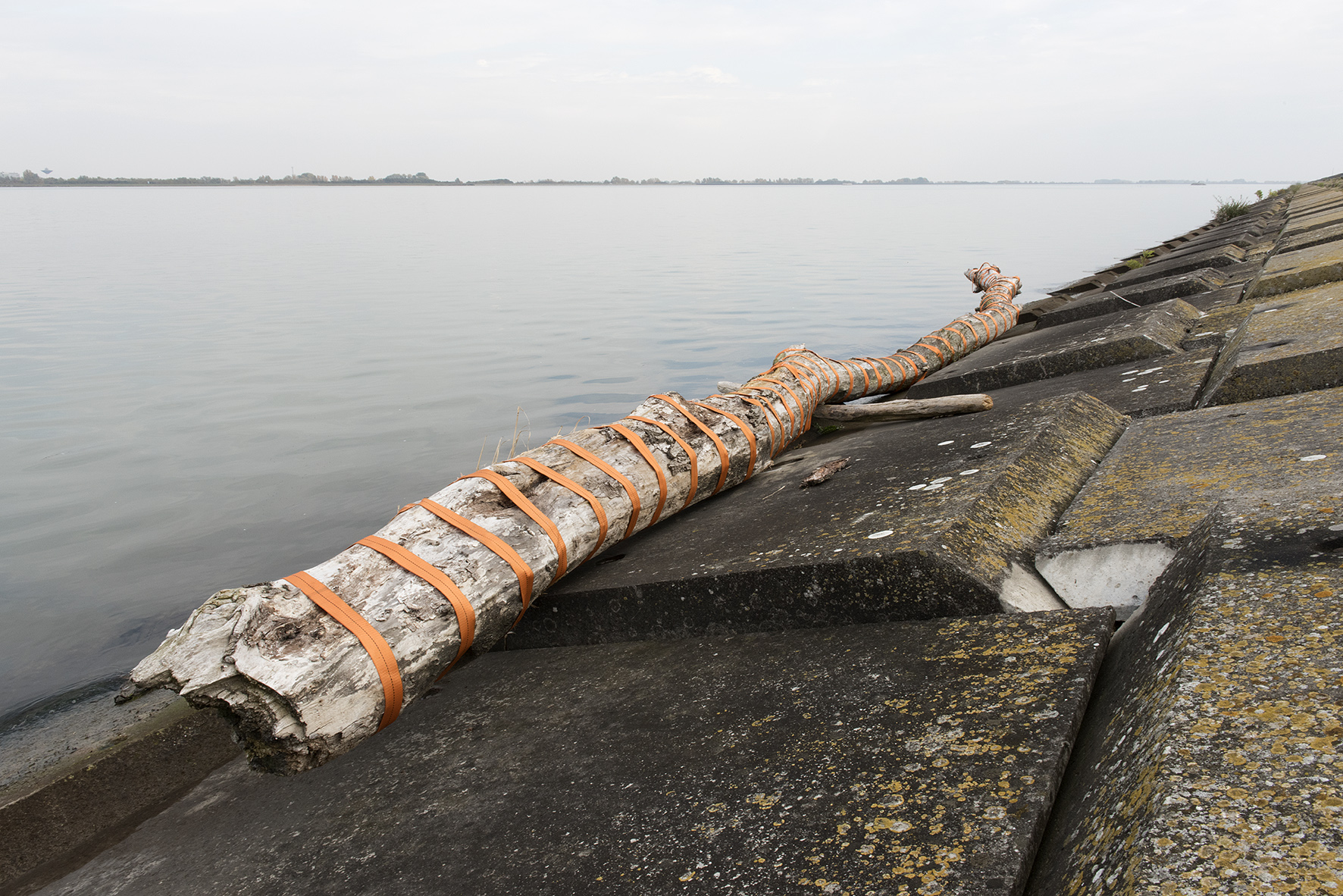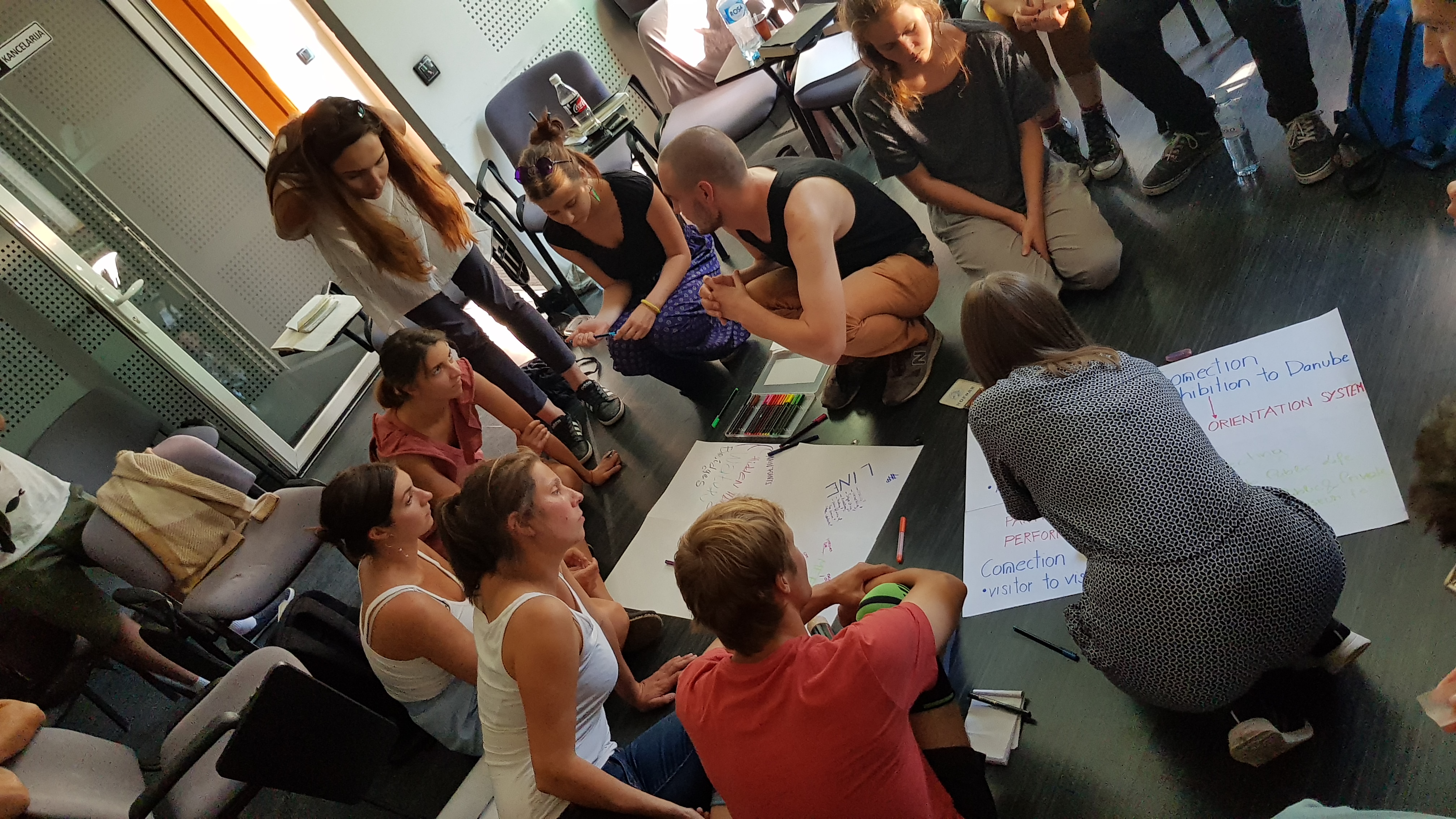|
|
| |
| |
 |
PILOT PROJECTS
|
| |
|
Interpretation of hidden heritage is a sensitive issue. Pilot projects, produced within the scope of the Interreg DTP CultPlatForm_21 project, are about discovering and interpreting hidden heritage in the Danube region. In producing pilot projects, project partners are trying to find tailored solutions for each hidden heritage site. Artistic or technological interventions may provide new ways of seeing this cultural area. Some of the pilot projects were already implemented, while some are still in production.
|
|
| |
 |
stereoscopes along the Upper Austrian Danube Limes reveal hidden heritage
|
| |
|


|
|
Upper Austria was a region where a number of Roman encampments were placed in the Roman times. Due to the fact that most of the Roman remains are covered by houses, hotels and other permanent constructions that, amongst other things, serve as important touristic resources, it is clear that traditional excavations and presentations would be unreasonable. Research was done mostly by underground scanning. The scanning results were used by archaeologists to determine exact size and schematic of the encampment.
In line with the project plans to introduce advance visualisations for different hidden historical sites, the State of Upper Austria Directorate Culture represented by the Museum of Upper Austria and the Upper Austria Culture Quarter (PP1) set up 6 stereoscopes on particular spots in Upper Austria along the Upper Austrian Danube Limes, that reveal hidden heritage. The solution with stereoscopes is effective, rather simple and technologically undemanding of the consumer. Every visitor, including the cyclers on the Danube Cycling Route, is able enjoy the 3D reconstructions of hidden heritage in an easy and approachable way.
The stereoscopes were an action that was added to a much larger action of the Landesmuseum to research and reconstruct Roman heritage in Upper Austria, namely in Schlögen, Oberrana and Enns.
More information at www.landesausstellung.at
© Image rigths: 7Reasons
|
|
| |
 |
Digital Heritage Pedagogy App in Pécs
|
| |
 |
|
A treasure hunt adventure was launched by Zsolnay Heritage Management Nonprofit Ltd. (PP7) as a pilot project in the framework of CultPlatForm_21 with the aim to introduce Cella Septichora, an anciant Roman chapel, part of the UNESCO World Heritage sites to the visitors. From October visitors can download the VisitorGame interactive app on their smartphones and start discovering this historical site searching for hidden QR codes through the exciting course enriched with numerous multi-media elements and quiz questions.
The aim of developing the Heritage Pedagogy Interactive App is to offer a complex experience to visitors via modern and innovative means. Namely, presenting visitors with the story of a fictional character from the Roman era, packed with relevant information which provide background knowledge in understanding the historical sites of Sopianae. The main scope of the App is ’teaching via play’, when visitors learn historical knowledge in a fun and educational manner.
© Image rights: Zsolnay Heritage Management Nonprofit Ltd
|
|
| |
 |
DAnube art Lab in Regensburg
|
| |
|


|
|
The pilot projects presented by the City of Regensburg (PP6) were produced through an artist in residence programme which had the visibility of the hidden as a guiding theme. In order to illustrate Europe’s memory, culture and history, the Regensburg pilot project explored artistic interventions, giving fresh impetus to the modernisation of cultural routes, attracting new audiences and serving touristic and cultural purposes. The City of Regensburg, together with the external expert donumenta e.V., supervised 11 artists and assisted them with professional and competent help to discover hidden places during their stay.
An international panel selected Catrin Bolt (Austria), Alena Foustková (Czech Republic), Milijana Istijanović (Montenegro), Nikita Kadan (Ukraine), Notburga Karl (Germany), Bojana S. Knežević (Serbia), Dumitru Oboroc (Romania), Klára Orosz (Hungary), Alexandru Raevschi (Moldova), Selma Selman (Bosnia and Herzegovina), and Borjana Ventzislavova (Bulgaria). Coming from the countries of the European Danube region, artists spent the summer and autumn of 2017 residing in Regensburg, in order to explore the city and its spaces: from the remnants of the Roman period to monuments of the medieval town, all the way into the twentieth century and the present day.
In the “Danube Art Lab” artists developed new interpretations of the cultural legacy of the UNESCO World Heritage city of Regensburg. Thanks to additional funding from the Bavarian Culture Fund, site-specific works of art were created: they were designed to visualise that which was hidden, or forgotten. Interventions, performances, and multimedia installations in the very heart of the city allowed locals and tourists alike to experience just how inspiring the past can be.
For further information please see here or visit our homepage.
© City of Regensburg, photos: Stefan Effenhauser
|
|
| |
 |
3D VISUALISATION OF BULGARIAN HISTORICAL MONuments
|
| |
 |
| |
|
The Ministry of Tourism of the Republic of Bulgaria aims to support less known cultural and historical sites in order to make them more visible and well known, in particular in the Danube region of the country. It pays special attention to the north western region of Bulgaria (where the city of Vidin is situated), which is less economically developed, but at the same time very rich in cultural and historical sites and monuments.
Among the Bulgarian historical monuments are the Kaleto defensive system and the Synagogue in Vidin. The Ministry of Tourism will promote these and other hidden sites by creating a 3D visualisation that will be implemented into information computer terminals – so-called kiosks – and a guide system for tourists in the city of Vidin.
The synagogue in Vidin has not been used as a prayer home since 1950 and is currently in a poor condition. Therefore, the 3D project will recreate the temple in its brilliance. Kaleto is the former town fortress to protect the city of Vidin, declared as an architectural and construction monument of national importance. The project for the general public will show different parts of the facility, covering an area of 7 sq. km, including a castle, managerial and residential buildings, water ditch, defense facilities and cells.
© Image rights: Ministry of Tourism of the Republic of Bulgaria
|
|
| |
 |
TAGGING HIDDEN ARCHITECTURE JEWELS AND OTHER activities
|
| |
|
Report about a project series by Rainer Prohaska
For this project series, Prohaska developed site-specific artworks for the
river banks and the spaces around these shores. These artworks were
used to accentuate ‘Hidden Heritage’ hotspots.
A) ‘Hidden Heritage’ HOTSPOTS
– Jarovecké Rameno
– Vodné dielo Čunovo
– Vodné dielo Gabčíkovo
– Sústava vodných diel Gabčíkovo
B) 'Hidden Heritage' ARTWORKS
 
– Tagging Hidden Architecture Jewels – Lines & Zones
The typical ‘Orange Line & Zone’ method, the artist is using to
'Tagg' architectures and objects were used to make the hidden
areas of Jarovecké, Čunovo and Gabčíkovo visible.

– The Nagymaros Experiment
This work plays with the history of the Gabčíkovo power plant
and the political conflict, which came along with this challenge.
The second stage of the ‘Gabčíkovo-Nagymaros’ project was built
by the artist, and temporary install between Slovakia and Hungary.

– Our House Boat at ‘Jarovecké Rameno’
In 2014, Prohaska explored the amazing house-boat colony in the
Jarovecké Rameno bay, south-east of Bratislava. Coming back
for the JR. activities, the artist built his own small house boat
and placed this into the row of swimming buildings.
 
– Sústava vodných diel Gabčíkovo – Photo Documentary
Beside three different site-specific artworks, a photo portrait of
the massive powerplant ‘Gabčíkovo’ could be realized.
© Image rights: Rainer Prohaska
|
|
| |
 |
further pilot projects
|
| |
 |
| |
|
Other project partners are working on their pilot projects that will be fully implemented in periods 4 and 5 and they include: the collaborative Studio DAHD group of pilot projects that involves the State of Upper Austria Directorate Culture represented by the Museum of Upper Austria and the Upper Austria Culture Quarter (PP1), the Ministry of Science, Research and the Arts Baden-Württemberg (PP2), the Ministry of Culture of the Republic of Bulgaria (PP4) and the Academy of Arts Novi Sad, University of Novi Sad (ASP1), with close cooperation of the Federal Chancellery of Austria, Division II: Arts and Culture (LP) and the Ministry of Culture and National Identity of Romania (PP3), engaging the students and mentors from art universities from Germany, Austria, Bulgaria and Serbia; the preparation of the Danube art festival of the Ministry of Culture and National Identity of Romania (PP3) and the pilot project of the Danube Competence Centre (IPA1), which is aimed towards the increase of visibility of the Golubac Fortress and Tabula Trajana.
© Image rights: Studio DAHD
|
|
|
|
|
| |
|
If you have received this newsletter, you have been included on one or more of the Danube Transnational Programme/projects postal mailing lists. We are committed to respect and protect the privacy of personal data collected. We regard your personal data as confidential information and will never communicate it to third parties. Your personal data are used mainly for the express purpose of receiving the newsletter. Your mailing details may also be used by the DTP and its projects for information and dissemination purposes strictly related to the programme and its projects. If you prefer not to receive more of this newsletter and your data not to be used for dissemination purposes, you can unsubscribe by sending a reply email.
|
|
|
|
|
|
